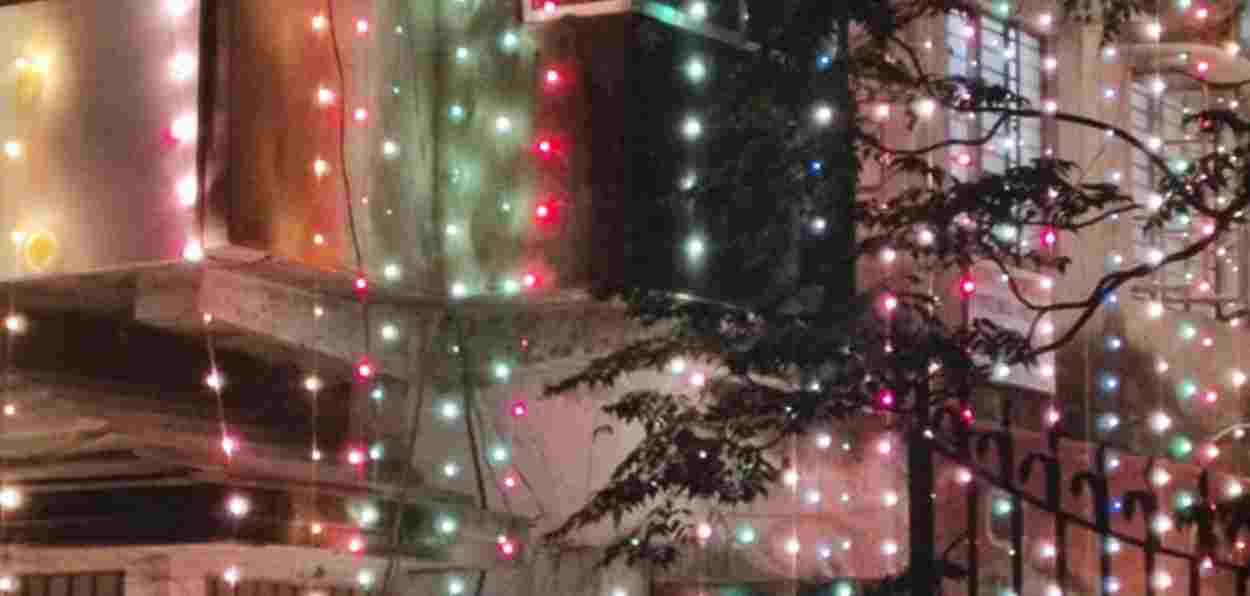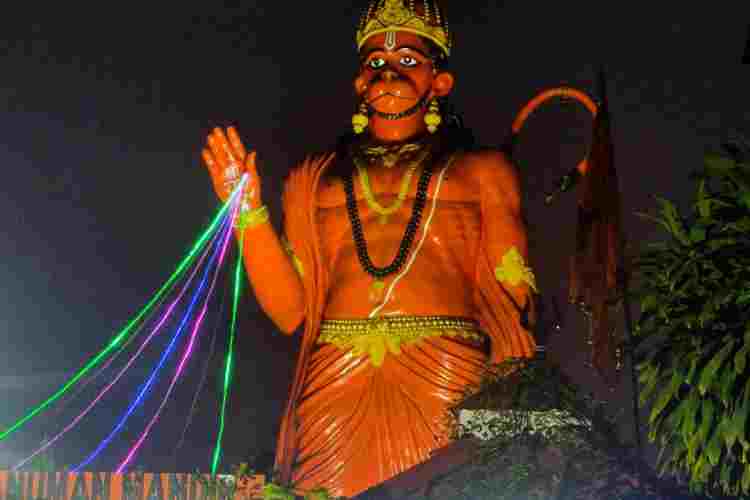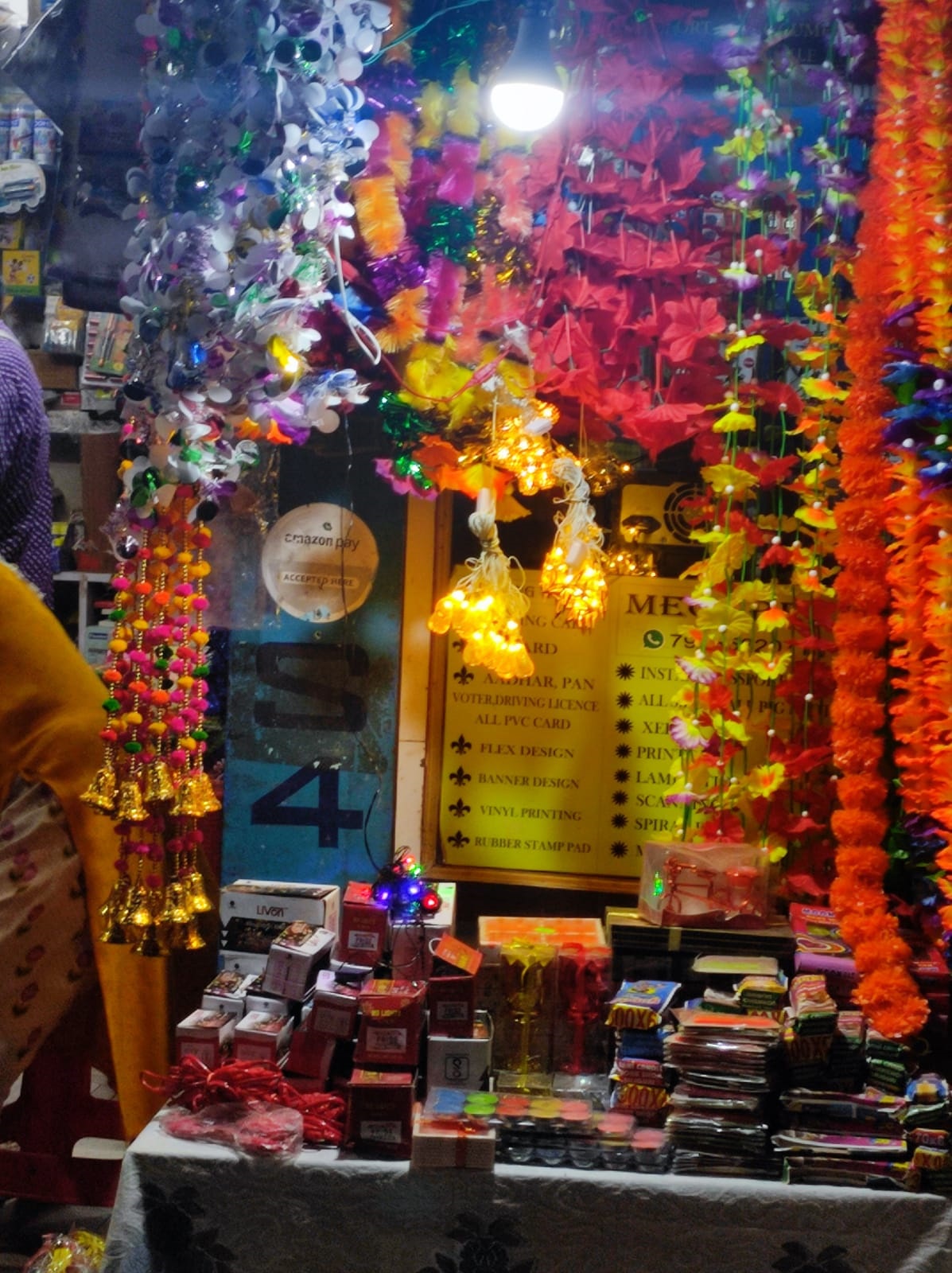
Rita Farhat Mukand/Siliguri (West Bengal)
As the air is bracing for the winter in the hills, Diwali preparations are exciting with the air shimmering with good vibes as happy crowds throng the little roads shopping and chattering. As I walk towards the little town of Sukna near the thick dark forests, the entire vicinity glitters with the vibrant lights of Diwali brightening up the little town.
From a distance, I can see the lights of Kurseong glow up the hills for a brief period before a thick fog covers the mountain.
In Sukna, devotees are busy preparing for Lakshmi, the goddess of good fortune, to come to earth and shower blessings on them for the coming year. The festival represents the spiritual triumph of light over darkness, good over evil, and knowledge over ignorance. multi-coloured lights and little clay lamps shimmer over the areas of Salbari, Sukna, and the roads leading to the hills of Mirik and Darjeeling.
Large temples are sparkling with hues of rich colours while pundits are soothingly droning their chanting on the eve of the Festival of Lights.
Their recitations are dedicated to Lord Rama, Goddess Lakshmi, and Lord Hanuman invoking their blessings, and protection, expressing devotion to these gods and goddesses associated with Diwali celebrations.
Some of the priests were chanting Sanskrit verses and hymns generally focusing on light, prosperity, and the triumph of good over evil.

Lord Hanuman statue on the eve of Diwali
It was particularly intriguing to see the giant Hanuman statue and temple beautifully lit up in the area of the road leading to the hills of Mirik while worshippers outside the temple were praying.
On the eve of Diwali, some devotees do Hanuman Puja in the belief that malevolent spirits wield heightened influence on the night of Kali Chaudas. Therefore, worshippers turn to Lord Hanuman, seeking strength, power, and protection from the influence of any negative forces.Towering powerfully amid the backdrop of the majestic night hills, the spirit of worship of the devotees was entrancing.
With busy throngs hustling and busting across crowded streets to buy gifts, sweets, Diwali lights, diyas, fruits, and flowers, preparations for Diwali on Sunday were big with houses glowing with lights, and the air of expectation in the air was high.
The spirit of unity hung heavy in the air, with a Buddhist gompa glittering with Diwali lights, opening their doors to the oneness of spirit.
It was particularly heartwarming to see one Muslim village in the area with a predominantly Muslim population with bright Diwali lights adorning the road, and trees decorated with festive lights. I saw people of different communities enter each other’s homes revealing the sense of friendship that exists between the communities.
The harmonious celebration of Diwali between Muslims, Hindus, Buddhists, and others reveals a beautiful testament to the rich cultural tapestry where these communities coexist with a spirit of mutual respect and understanding that transcends religious boundaries.
.jpg) Bakery shop in Siliguri making brisk sales on Diwali eve
Bakery shop in Siliguri making brisk sales on Diwali eve
Md. Shakir who owns a bakery, said, “Yes, we do make special items for Diwali, including chocolates and we take orders for cakes for the Diwali celebrations.’
As villagers confirm to me when I ask them if they participate in each other’s festivities, they share that Muslims and Hindus frequently join in the festivities of each other's festivals, fostering a sense of unity and shared joy.
During Hindu festivals like Diwali, it is not uncommon to find Muslim neighbors participating in the celebrations, exchanging sweets, and sharing in the joyous atmosphere. Similarly, during Eid celebrations, Hindus extend warm wishes, join in feasts, and exchange greetings with their Muslim friends and neighbors.
Another Muslim biryani seller does take orders for biryani for Diwali parties, their tiny shop was always overflowing with customers from all communities ordering their incredibly delicious mouth-watering biryani, serving both vegetarian biryani and non-vegetarian.

This harmonious co-celebration is a reflection of the cultural assimilation that has taken place over centuries, where traditions and customs are often shared and appreciated across religious lines. It serves as a powerful example of how diversity can be a source of strength, enriching the collective experience of a community.
In these shared celebrations, the essence of unity and comradeship is emphasized, transcending religious differences. It also highlights the shared values of love, compassion, and the importance of coming together to celebrate the various aspects of life. This harmonious coexistence is not only a celebration of festivals but also a celebration of the pluralistic fabric that defines the social landscape in many regions.
In contrast to the muted festivities that marked the recent past due to the drastic impact of COVID-19, there was a growing optimism and a renewed zeal among the residents at the foothills as they prepared for the upcoming Diwali celebrations. The aftermath of the pandemic that had taken many lives in the hills had restrained the exuberance of the festival, which seems to be gradually receding, allowing for a resurgence of the vibrant and lively Diwali spirit.
The author is a Siliguri-based independent writer
